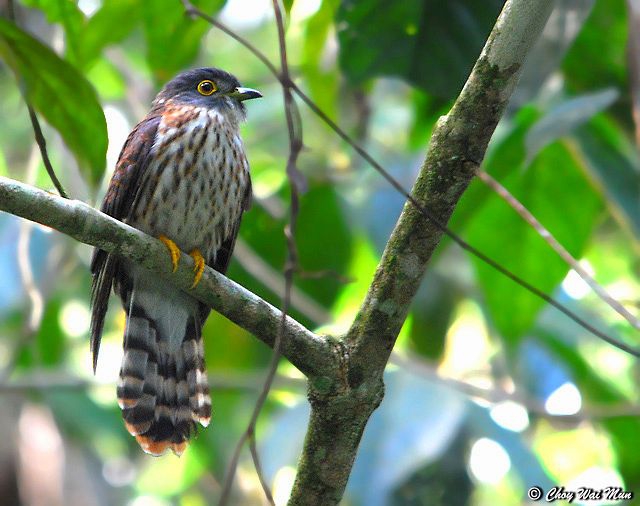| Citation |
|
Description |
Distribution
Range
learn more about this article
S Thailand, Malay Peninsula and Greater Sundas.
Clements, J. F., T. S. Schulenberg, M. J. Iliff, D. Roberson, T. A. Fredericks, B. L. Sullivan, and C. L. Wood. 2014. The eBird/Clements checklist of birds of the world: Version 6.9. Downloaded from http://www.birds.cornell.edu/clementschecklist/download/
Creative Commons Attribution Non Commercial 3.0 (CC BY-NC 3.0)
Partner Web Site: Cornell Laboratory of Ornithology
TRUSTED
article rating from 0 people Default rating: 2.5 of 5
comment on or rate this article
MOLECULAR BIOLOGY AND GENETICS
Molecular Biology
Statistics of barcoding coverage: Cuculus fugax
learn more about this article
Barcode of Life Data Systems (BOLDS) Stats
Public Records: 0
Specimens with Barcodes: 1
Species With Barcodes: 1
Creative Commons Attribution 3.0 (CC BY 3.0)
© Barcode of Life Data Systems Source: Barcode of Life Data Systems (BOLD)
TRUSTED
article rating from 0 people Default rating: 2.5 of 5
comment on or rate this article
WIKIPEDIA
Hodgsons hawk-cuckoo
learn more about this article
The Hodgsons hawk-cuckoo (Hierococcyx nisicolor), also known as the northern hawk-cuckoo is a species of cuckoo found in north-eastern India, Burma, southern China, and southeast Asia.
Hodgsons hawk-cuckoo is a brood parasite. The chick evicts bona fide residents of the parasitized nest, thus becoming the sole occupant. Under normal circumstances, this would reduce the provisioning rate as the foster parents see only one gape. To counteract this, the Hodgsons hawk-cuckoo displays gape-coloured patches of skin under its wing to simulate additional gapes; the strategy appears to increase the provisioning rate. This is in contrast to other species of cuckoo (such as the common cuckoo) which increase the rapidity of high pitched hunger calls to increase the provisioning rate.
Although the skin patch is not gape-shaped, it is convincing: host parents occasionally place food into the patch.
Hodgsons hawk-cuckoo was formerly regarded as having four subspecies. The Philippine hawk-cuckoo is now commonly treated as a separate species, H. pectoralis. The remaining forms are also now split into three species: Malaysian hawk-cuckoo (H. fugax), Hodgsons hawk-cuckoo (H. nisicolor) and Rufous hawk-cuckoo or Northern hawk-cuckoo (H. hyperythrus).
The common name commemorates the British naturalist Brian Houghton Hodgson.[2]
References[edit]
^ BirdLife International (2014). "Hierococcyx nisicolor". IUCN Red List of Threatened Species. Version 2014.3. International Union for Conservation of Nature. Retrieved 31 December 2014.
^ Beolens, Bo; Watkins, Michael (2003). Whose Bird? Men and Women Commemorated in the Common Names of Birds. London: Christopher Helm. p. 167. |


